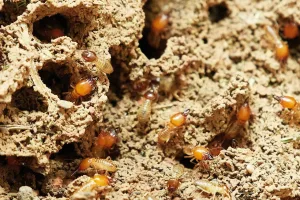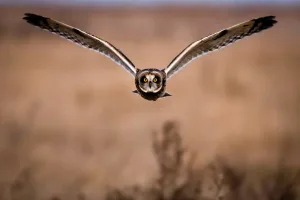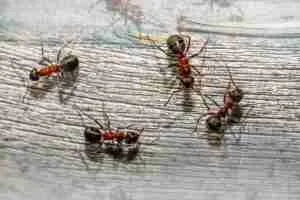21 Fun Facts about Otters | Joyful Aquatic Lives
-
Otters have webbed feet, making them excellent swimmers.
-
Otters use their stomachs as dining tables.
-
Some otters juggle rocks for fun.
-
Otters can close their ears and noses underwater.
-
Baby otters are called pups.
-
Otters have a third eyelid for underwater vision.
-
Otters can hold their breath for up to eight minutes.
-
Otters wrap themselves in kelp to stay anchored.
-
Otters can be right or left-handed.
-
A special pouch holds their favorite rock.
-
Retractable claws are similar to those of cats.
-
Sliding down muddy banks is a favorite pastime.
-
Otters’ whiskers are highly sensitive for detecting prey.
-
In the wild, they can live up to 16 years.
-
Dense bones help them stay submerged.
Table of Contents
1. Sea otters can eat up to 25% of their body weight daily.
Due to their high metabolic rate, sea otters need to consume large amounts of food to stay warm. They primarily eat sea urchins, crabs, clams, and other marine invertebrates.
This diet helps maintain the balance of kelp forest ecosystems by controlling sea urchin populations.
2. Otters have the densest fur of any mammal.
Otters’ fur can have up to a million hairs per square inch. This dense fur traps air to keep them warm and buoyant in cold waters.
Their fur consists of two layers: an undercoat and longer guard hairs, which provide insulation and waterproofing.
3. They use tools to hunt and eat.
Otters are one of the few non-primate species known to use tools. They often use rocks to crack open shellfish and other hard prey.
Sea otters have even been observed storing favorite rocks in the loose skin under their armpits for easy access while diving.
4. Otters hold hands while sleeping.
READ ALSO: 25 Fun Facts about Red Pandas | Astonishing Traits
Sea otters often hold hands to prevent drifting apart. This behavior, known as “rafting,” ensures they stay together in groups.
Sometimes, they also wrap themselves in kelp to anchor themselves in place. This adorable habit is both practical and endearing.
5. Otters are highly social animals.
Otters live in family groups and are known for their playful behavior. They engage in activities like sliding down mud or snow, wrestling, and chasing each other.
These social interactions are essential for their development and survival, strengthening family bonds and teaching important survival skills.
6. Otters have significant cultural importance.
In many Native American cultures, otters are seen as symbols of loyalty and honesty. They are often featured in myths and legends, highlighting their playful and curious nature.
However, in some regions, otters were viewed with fear and associated with the supernatural, showcasing the diverse perspectives on these animals.
7. Otter poop, called spraint, has a unique smell.
Otter spraint is known for its distinctive scent, often compared to violets or jasmine. This unusual smell is used by otters to mark their territory and communicate with other otters.
Researchers use spraint to study otter populations and their diet, as it provides valuable ecological information.
8. Giant otters are incredibly vocal.

READ ALSO: 27 Fun Facts About Coyote | Expanding Territories
Giant otters have a repertoire of 22 distinct vocalizations used for communication. These include calls for coordinating movements and alerting others to potential threats.
Pups have their own set of 11 sounds, which they use to communicate with their mothers and other group members.
9. Otters are expert swimmers.
Otters are agile swimmers, capable of reaching speeds up to 7 miles per hour(11 km/h). They can close their nostrils and ears to keep water out while diving.
River otters can hold their breath for up to eight minutes, allowing them to hunt for fish and other prey underwater effectively.
10. They are crucial for their ecosystems.
Otters play a vital role in maintaining healthy ecosystems. Sea otters, for example, help control sea urchin populations, which in turn helps protect kelp forests.
This keystone species’ presence promotes biodiversity and supports the overall health of their habitats.
11. Otters collaborate with humans in some cultures.
In Bangladesh, fishermen have historically trained otters to help herd fish into nets. This unique practice demonstrates the deep connection and mutual benefits between humans and otters.
Such collaborations highlight the intelligence and trainability of otters, as well as their importance in local traditions and economies.
12. River otters are smaller than sea otters.

READ ALSO: 26 Fun Facts about Worms | Tiny Titans
River otters typically weigh between 10 and 30 pounds, while sea otters can be significantly heftier, with males reaching up to 90 pounds and females around 60 pounds.
Sea otters need more body mass to stay warm in the cold ocean waters, whereas river otters live in relatively warmer environments.
13. Sea otters use their armpits as pockets.
Sea otters have loose skin under their armpits where they store food and tools. They often keep rocks in these “pockets” to crack open shellfish.
This unique adaptation helps them carry essential items while they swim and forage in the ocean.
14. Otters are excellent divers.
Sea otters can dive up to 318 feet to find food. Their dives are usually within 100 feet, but they can go deeper if necessary.
They use their strong forepaws to dig for clams and other prey hidden in the ocean floor.
15. Sea otters can live their entire lives in water.
Unlike river otters, sea otters can spend their entire lives in the ocean. They eat, sleep, and even give birth in the water.
Their ability to live completely in water sets them apart from other otter species.
16. Otters have powerful tails.

READ ALSO: 26 Fun Facts about Axolotl | Why They Never Grow Up
An otter’s tail makes up about one-third of its body length. This muscular tail helps them swim efficiently and steer through the water.
It also aids in their playful behavior, like sliding down mud or snowbanks.
17. Sea otters groom constantly.
Sea otters spend a significant amount of time grooming their fur. This is crucial to maintain its insulating properties and buoyancy.
Clean fur traps air and keeps them warm, so grooming is a vital activity for their survival.
18. Otters are found on almost every continent.
There are 11 species of otters, and they are distributed across North and South America, Europe, Africa, and Asia. Each species has adapted to its unique environment.
Their widespread presence highlights their adaptability and resilience.
19. Otters communicate through various vocalizations.
Otters use a range of sounds, including whistles, growls, and chirps, to communicate. These sounds help them coordinate activities and express emotions.
Body language, such as tail slapping and arching their backs, also plays a key role in their communication.
20. Otters have a unique way of eating.

READ ALSO: 25 Fun Facts about Hammerhead Sharks | Weird Head Wonders
Sea otters often use their chests as dining tables. They float on their backs and place their food on their chests while they eat.
This behavior is both practical and characteristic of their relaxed and playful nature.
21. Otters have a playful nature.
Otters are known for their playful behavior, which includes sliding, wrestling, and chasing. These activities are not only fun but also help them develop survival skills.
Their playful antics are a joy to watch and are a testament to their intelligence and social nature.
FAQs
Sea otters are larger, live exclusively in the ocean, and have thicker fur. River otters are smaller, more agile on land, and primarily inhabit freshwater environments.
Otters help maintain a balanced ecosystem by controlling prey populations like sea urchins, which can otherwise destroy kelp forests.
Rock juggling may be a form of play, practice for hunting, or a way to relieve boredom.
Yes, otters can live in captivity, often with a lifespan longer than in the wild due to regular food supply and medical care.
Otters rely on their dense fur and a high metabolism, consuming large amounts of food to generate heat.





